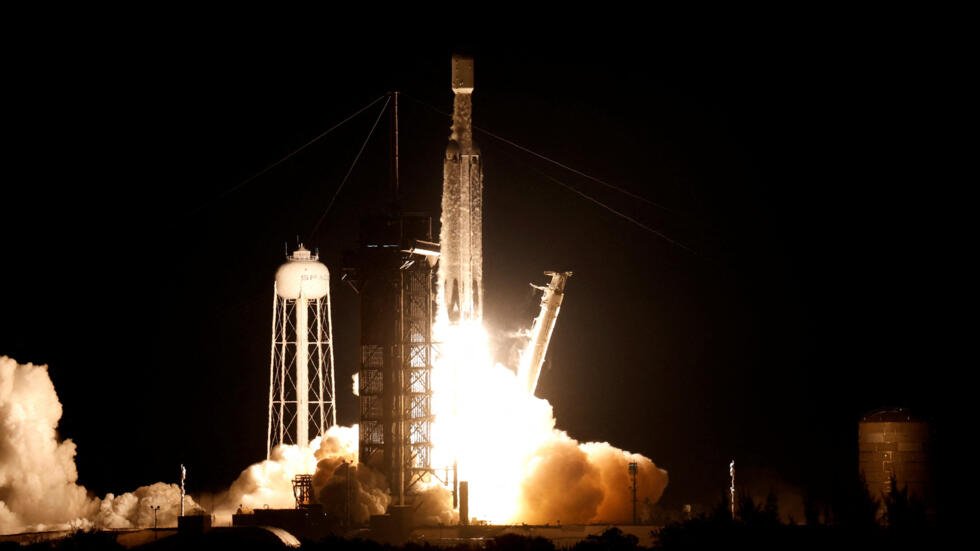SpaceX’s Falcon Heavy rocket roared back into space on Thursday night to embark on a classified mission, ferrying the US military’s secretive X-37B drone.

SpaceX’s Falcon Heavy rocket roared back into space on Thursday night to embark on a classified mission, ferrying the US military’s secretive X-37B drone. The liftoff, which took place at NASA’s Kennedy Space Center in Florida, had faced several weeks of delays but finally occurred at 8:07 pm Eastern Time, with the entire event livestreamed on SpaceX’s website.
The enigmatic nature of the mission adds to the intrigue surrounding the X-37B, an uncrewed and autonomously operating spacecraft now on its seventh mission. Details about its destination and objectives remain shrouded in secrecy, with the Pentagon providing minimal information and SpaceX only referring to the mission by its code name, USSF-52.
“Falcon Heavy launched the USSF-52 mission to orbit from Launch Complex 39A,” stated SpaceX in a brief release.
The X-37B’s seventh mission involves “multiple cutting-edge experiments,” according to the Pentagon, which has been tight-lipped about the specifics. Planned experiments include operating the reusable spaceplane in new orbital regimes, testing future space domain awareness technologies, and investigating the radiation effects on materials provided by NASA, according to a statement from the US Department of the Air Force Rapid Capabilities Office.
Notably, this mission marks the first time the X-37B is lifting off on a Falcon Heavy, one of the most powerful operational rockets capable of carrying payloads of up to 26,700 kilograms (58,900 pounds) deep into space.
Resembling a mini version of the retired manned space shuttles, the X-37B is about the size of a small bus. It has been operational since 2010, designed for the Air Force by United Launch Alliance, a joint venture between Boeing and Lockheed Martin. The spacecraft, powered by solar panels, measures 30 feet (nine meters) in length and boasts a 15-foot wingspan.
Past missions of the X-37B have included tests for NASA, focusing on the impact of radiation on seeds and other materials. The drone’s ability to operate in new orbital regimes adds a layer of mystery to its latest mission.
The Falcon Heavy launch follows closely on the heels of China’s own secretive space endeavors. Just two weeks prior, China launched its robotic space plane, Shenlong, into orbit. According to state news agency Xinhua, Shenlong’s mission involves “reusable technology verification and space science experiments” during a designated period.
While the specific goals of these classified missions remain undisclosed, the global space race continues to intensify, with both the United States and China demonstrating their capabilities in space exploration and technology.
As the X-37B embarks on its mysterious journey, it raises questions about the evolving landscape of space activities and the strategic significance of these clandestine missions, adding a layer of suspense to the advancements in space exploration.